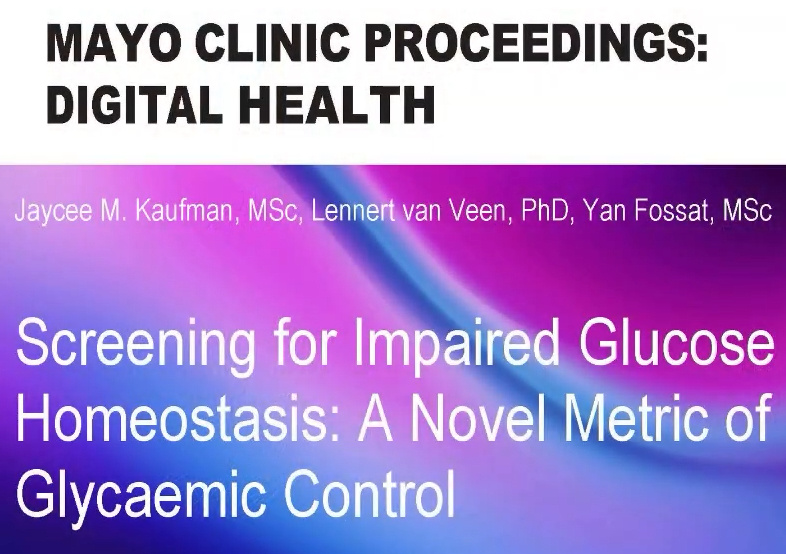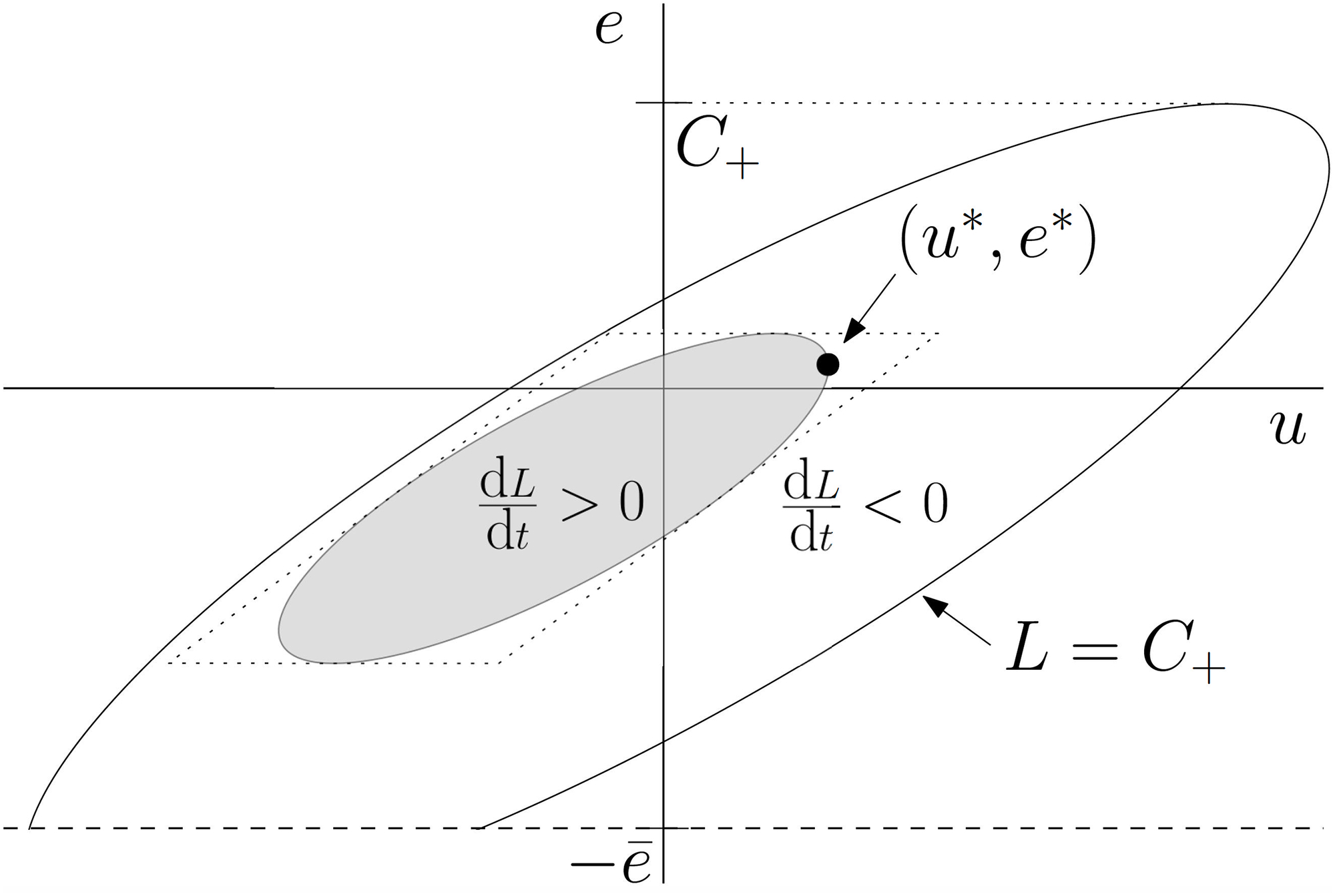publications
A more or less complete list is maintained by Google Scholar and almost all papers are available from arXiv. There may be differences with the published versions according to the applicable policies on formatting and embargos.
2023
-
 Screening for Impaired Glucose Homeostasis: A Novel Metric of Glycemic ControlJaycee M. Kaufman, Lennaert van Veen, and Yan FossatMayo Clinic Proceedings: Digital Health, 2023
Screening for Impaired Glucose Homeostasis: A Novel Metric of Glycemic ControlJaycee M. Kaufman, Lennaert van Veen, and Yan FossatMayo Clinic Proceedings: Digital Health, 2023Objective To investigate the use of a mathematical model of glucose homeostasis, fit to continuous glucose monitor data, as a metric of dysfunctional glycemic control. Patients and Methods Three hundred eighty four participants recruited from 2 studies between October 2020 and June 2022 were equipped with a continuous glucose monitor, and interstitial glucose data were automatically collected for 2 weeks. The participants were assessed by a physician and diagnosed as being diabetic, prediabetic, or healthy according to the American Diabetes Association guidelines. A mathematical model of glucose homeostasis was fitted to the glucose data, and model parameter values were obtained. The participants were classified into the following 2 groups on the basis of their glucose homeostasis parameters: effective and impaired. Finally, glycemic variability metrics were compared with glucose homeostasis classification. Results The homeostasis classification resulted in a specificity, sensitivity of individuals with prediabetes, and sensitivity of individuals with type 2 diabetes (T2D) of 0.78, 0.86, and 1.00, respectively, for women and 0.71, 0.86, and 1.00, respectively, for men. This sensitivity was similar to that of glycated hemoglobin A1c measurement (a sensitivity of 0.89 for women and 0.90 for men for prediabetes and a sensitivity of 1.00 for T2D) and superior to that of the oral glucose tolerance test (a sensitivity of 0.18 for women and 0.24 for men for prediabetes and a sensitivity of 0.75 for women and 0.86 for men for T2D). Overall, the individuals classified as impaired had increased glucose variability metrics than the individuals classified as effective (P<.05). Conclusion The classification of glucose homeostasis on the basis of mathematical modeling of continuous measurements has promising applications as a new metric of dysfunctional glycemic control. Trial Registration clinicaltrials.gov Identifier: NCT04529239; clinical trial registry identifier: CTRI/2021/08/035957
2022
-
 A parsimonious model of blood glucose homeostasisEric Ng, Jaycee M. Kaufman, Lennaert Veen, and 1 more authorPLOS Digital Health, Jul 2022
A parsimonious model of blood glucose homeostasisEric Ng, Jaycee M. Kaufman, Lennaert Veen, and 1 more authorPLOS Digital Health, Jul 2022The mathematical modelling of biological systems has historically followed one of two approaches: comprehensive and minimal. In comprehensive models, the involved biological pathways are modelled independently, then brought together as an ensemble of equations that represents the system being studied, most often in the form of a large system of coupled differential equations. This approach often contains a very large number of tuneable parameters (> 100) where each describes some physical or biochemical subproperty. As a result, such models scale very poorly when assimilation of real world data is needed. Furthermore, condensing model results into simple indicators is challenging, an important difficulty in scenarios where medical diagnosis is required. In this paper, we develop a minimal model of glucose homeostasis with the potential to yield diagnostics for pre-diabetes. We model glucose homeostasis as a closed control system containing a self-feedback mechanism that describes the collective effects of the physiological components involved. The model is analyzed as a planar dynamical system, then tested and verified using data collected with continuous glucose monitors (CGMs) from healthy individuals in four separate studies. We show that, although the model has only a small number (3) of tunable parameters, their distributions are consistent across subjects and studies both for hyperglycemic and for hypoglycemic episodes.
2019
-
 Time-Periodic Inertial Range DynamicsLennaert Veen, Alberto Vela-Martı́n, and Genta KawaharaPhys. Rev. Lett., Sep 2019
Time-Periodic Inertial Range DynamicsLennaert Veen, Alberto Vela-Martı́n, and Genta KawaharaPhys. Rev. Lett., Sep 2019A wide class of physical systems exhibit scale invariance. While the statistical properties of such behavior can often be investigated by theoretical and experimental means, its dynamics are notoriously hard to parse. We investigate scale-invariant dynamics through an unstable periodic orbit. This orbit coexists with turbulence of an incompressible fluid and yields a significant Kolmogorov energy spectrum. We identify events of intense energy transfer across spatial scales and relate them to vortical dynamics. The results support a recently proposed mechanism for turbulent energy transfer.